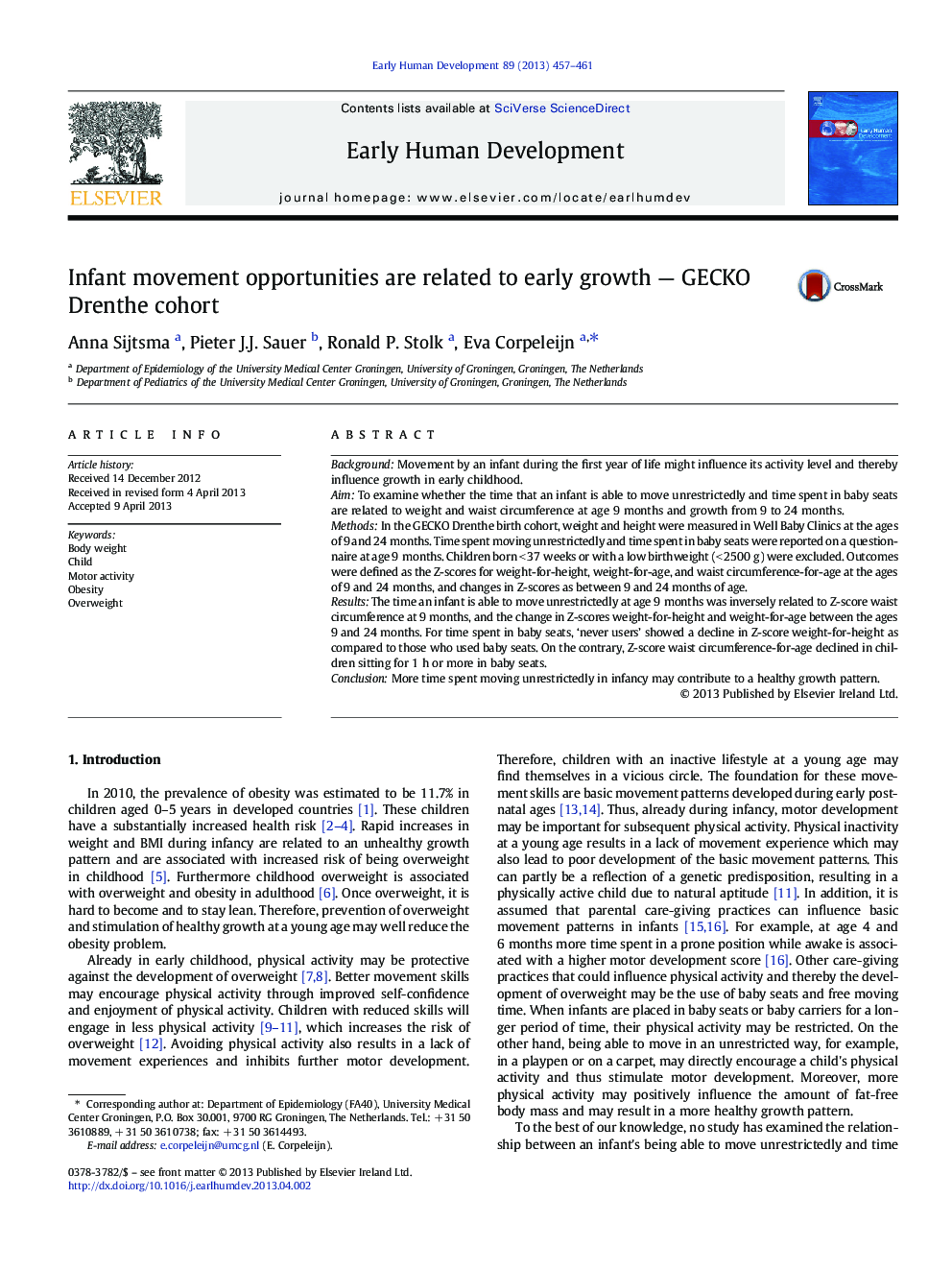| Article ID | Journal | Published Year | Pages | File Type |
|---|---|---|---|---|
| 6171957 | Early Human Development | 2013 | 5 Pages |
BackgroundMovement by an infant during the first year of life might influence its activity level and thereby influence growth in early childhood.AimTo examine whether the time that an infant is able to move unrestrictedly and time spent in baby seats are related to weight and waist circumference at age 9Â months and growth from 9 to 24Â months.MethodsIn the GECKO Drenthe birth cohort, weight and height were measured in Well Baby Clinics at the ages of 9 and 24Â months. Time spent moving unrestrictedly and time spent in baby seats were reported on a questionnaire at age 9Â months. Children born <Â 37Â weeks or with a low birthweight (<Â 2500Â g) were excluded. Outcomes were defined as the Z-scores for weight-for-height, weight-for-age, and waist circumference-for-age at the ages of 9 and 24Â months, and changes in Z-scores as between 9 and 24Â months of age.ResultsThe time an infant is able to move unrestrictedly at age 9Â months was inversely related to Z-score waist circumference at 9Â months, and the change in Z-scores weight-for-height and weight-for-age between the ages 9 and 24Â months. For time spent in baby seats, 'never users' showed a decline in Z-score weight-for-height as compared to those who used baby seats. On the contrary, Z-score waist circumference-for-age declined in children sitting for 1Â h or more in baby seats.ConclusionMore time spent moving unrestrictedly in infancy may contribute to a healthy growth pattern.
